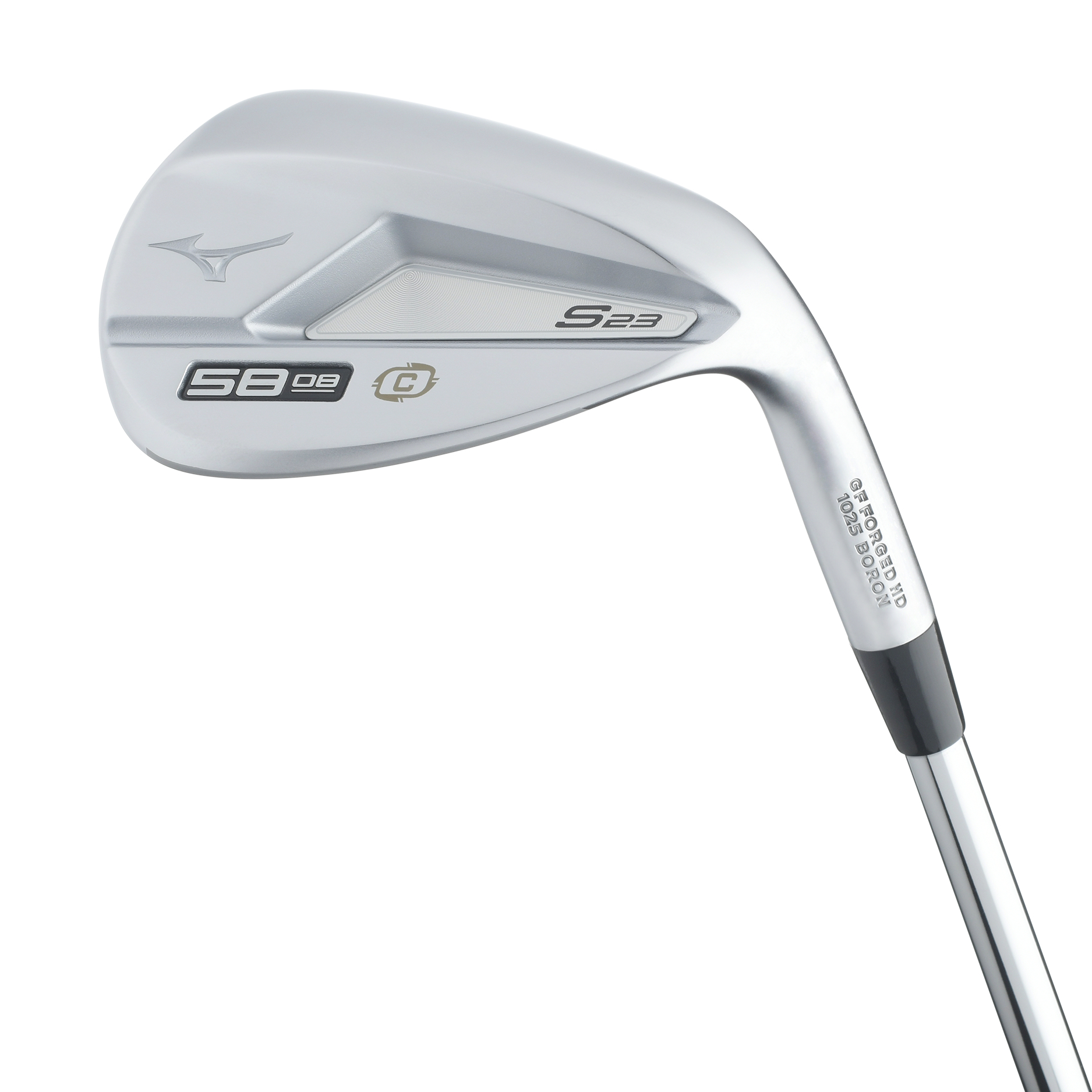New wedges
Mizuno S23 wedges: What you need to know

WHAT YOU NEED TO KNOW: Mizuno’s latest wedge offering is forged from mild 1025 carbon steel and features a back-cavity area designed to move the center of gravity more toward the center of the face. Doing so not only creates a more pleasing sensation at impact but can enhance spin as well as mitigating ball speed loss on shots hit off the toe.
PRICE/AVAILABILITY: The S23 costs $160 per wedge. Avaialble February 2023 in multiple grinds and two finishes.
3 COOL THINGS

Because wedges often feature long hosels and substantial mass toward the heel, the center of gravity leans toward the heel, but that doesn’t make for an efficient wedge, particularly for average players who tend to hit out on the toe. Mizuno addresses this by using a shorter hosel and a cavity in back that stretches from just right of center all the way to the heel, leaving more mass in the toe area. This creates a more centered CG and extends impact for maximum spin.
1. Move it to the middle. Because wedges often feature long hosels and lots of mass toward the heel, the center of gravity on them tends to lean towards the heel a little. That, however, does not make for a very efficient wedge, particularly for everyday players who tend to hit out on the toe fairly often.
Mizuno’s new S23 addresses that problem by employing a shorter hosel and a cavity in back that stretches from just right of center all the way to the heel, leaving more mass out on the toe area in back.
This creates a more centered CG, as opposed to a heel-biased location in many conventional wedges. According to Mizuno, having the sweet spot more centered contributes to a longer dwell time between the ball and the face at impact, leading to more spin.
“That check and spin you see from the pros isn’t purely because of newer grooves—most of us don’t have the consistency of strike to get that kind of action,” said David Llewellyn, director of R&D for Mizuno. “For the vast majority, a central sweet spot makes it much easier to find and get that repetitive action.”
2. Going with the grain. Mizuno, of course, is known for its quality forgings, using a grain-flow forging process since 1998 in which a billet of carbon steel is stretched into an angle that matches up with the hosel and clubhead shape, producing a tighter grain structure. In 2017, however, it improved the process to reduce the excess material outside the perimeter of the forged clubhead, concentrating more density in the hitting area to improve feel. The company called the new process “grain flow forging HD,” for high density.
The S23 wedges undergo that process in the company’s facility in Hiroshima, Japan, resulting in a better-player’s preferred, versatile look at address with stronger lofts featuring a teardrop straight edge while the lob wedge is more rounded. The process, however, doesn’t just improve the look, but the feel as well.
“By having this very uniform flash material around it, that shows we’re capturing long uniform grains in the middle, grains aren’t being cut off,” Llewellyn told Golf Digest in 2017. “The material is actually flowing out of the mold very uniformly. So that’s the grain continuity that leads to longer vibration and better feel.
3. Spin city. It’s nearly impossible to talk about wedges without getting into the grooves and Mizuno has done a solid job here. The company uses its quad-cut grooves which are CNC milled grooves cut into the face with the design of the groove dependent on loft. The carbon steel is infused with Boron to help durability, effectively creating a longer lifespan for the grooves. To help dewsweepers and those playing in damp conditions, microgrooves are laser etched between the grooves to help reduce spin loss in damp conditions.